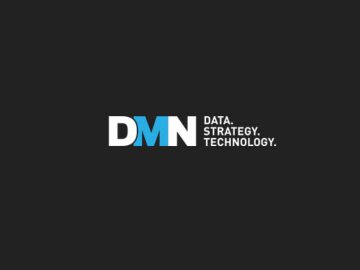The future of work hinges on more than just technology adoption—it’s about fundamentally rethinking how value is created. Digital workflows and automation technologies are not just tools for efficiency; they are catalysts for shifting from reactive to proactive business models. These technologies enable companies to predict market shifts, preempt disruptions, and continuously innovate. Organizations that succeed in this space are those that embed automation as part of a broader transformation strategy, linking operational agility with long-term value creation rather than treating them as isolated upgrades.
The Strategic Edge of Digital Workflows
Digital workflows aren’t just tools for streamlining operations, they’re catalysts for new strategic possibilities. While Robotic Process Automation (RPA) and Artificial Intelligence (AI) are commonly recognized for enhancing efficiency, their untapped value lies in how they reshape the entire value chain. Beyond cost savings, these technologies enable seamless cross-functional collaboration, allowing departments like marketing, supply chain, and customer service to interact with real-time data in ways that were previously fragmented. This creates an environment where insights are shared across silos, fostering innovation and driving more cohesive decision-making.
A key differentiator of AI-driven workflows is not just speed but the ability to predict and adapt. For example, an AI-enhanced supply chain anticipates demand fluctuations, geopolitical risks, and material shortages rather than simply reducing lead times. This predictive capability transforms supply chains from reactive to proactive ecosystems, enabling companies to capitalize on emerging opportunities rather than just mitigating risks. The result is a fundamentally more adaptive and resilient enterprise that thrives in unpredictability.
Rethinking Workforce Roles and Capabilities
Automation is reshaping the workforce in ways that go far beyond simply replacing repetitive tasks. It is redefining roles and shifting human effort towards areas that demand higher cognitive functions like critical thinking, innovation, and complex problem-solving. As routine tasks are automated, the human workforce is free to focus on creating new value—yet this also creates a demand for a new skill set.
However, this shift also brings challenges, particularly in terms of workforce readiness. Companies must invest in building dynamic learning ecosystems that enable continuous development, ensuring employees are not just proficient with automation tools but can work alongside them effectively. Emerging roles such as “automation managers” and “workflow architects” are becoming as critical as traditional leadership positions, playing key roles in shaping how businesses operate in an automated future.
Moreover, the rise of low-code and no-code platforms is democratizing automation. By empowering non-technical employees to design and implement workflows themselves, these platforms break down traditional barriers between IT and business functions. This capability fosters greater organizational agility, enabling rapid iteration and innovation without the bottleneck of technical expertise. In a sense, the future workforce isn’t just tech-savvy, it’s an active participant in driving automation, making adaptability and digital fluency non-negotiable skills for all employees.
How AI and Automation Affect Work Across Industries?
AI and automation are reshaping industries by transforming core functions, but their true impact comes from how well they align with strategic objectives. These technologies don’t just automate tasks; they unlock new ways of creating value and enhancing agility across sectors.
In healthcare, automation goes beyond administrative efficiency. AI-driven workflows are revolutionizing patient care by enabling predictive diagnostics and personalized treatment plans. By analyzing patient data in real-time, AI can identify potential health risks early, guide clinical decisions, and reduce treatment variability. The result is more accurate diagnoses, improved patient outcomes, and a system that proactively manages care rather than reacting to problems.
In financial services, automation is transforming processes like credit underwriting and fraud detection. AI models that assess risk in real-time allow banks to offer hyper-personalized products and services while maintaining stringent regulatory compliance. These digital workflows not only streamline operations but also provide predictive insights that improve customer experiences and strengthen fraud defenses, turning compliance and risk management into competitive advantages.
Across industries, these examples illustrate that automation isn’t just a tool for efficiency; it’s a strategic lever for innovation. It enables organizations to stay ahead of disruption, reimagine value delivery, and continuously adapt in a world where agility is the key to long-term success.
Barriers to Adoption and Strategic Responses
While digital workflows and automation hold great promise, realizing their full potential requires overcoming several barriers:
- Cultural resistance is a major hurdle, necessitating effective change management and the establishment of digital champions within teams.
- Integrating automation technologies with legacy systems poses technical challenges, so businesses require a hybrid approach for incremental modernization.
- Scaling automation beyond pilot projects demands a strategic roadmap that aligns cross-functional use cases with organizational growth objectives while continuously assessing and adjusting initiatives.
Building a Resilient Future with Automation
To build a future of work where digital workflows are seamlessly integrated into everyday operations, organizations must:
Create Automation Governance Frameworks: A resilient future requires more than just technology and strategy; it demands strong governance around automation. This includes setting clear policies on where and how automation is applied, how data is handled, and the ethical implications of AI-driven decisions. Governance frameworks ensure consistency and alignment with corporate values, preventing automation from leading to unintended consequences, such as bias in AI systems or security vulnerabilities. Developing a strong governance structure enables organizations to scale automation responsibly while maintaining trust with customers and stakeholders.
Leverage Data as an Automation Catalyst: The success of automation is often tied to the quality and accessibility of data. Organizations should not view data as a byproduct but as a core enabler of automation. Investing in robust data infrastructure—ensuring data is clean, accessible, and integrated across systems—can exponentially increase the effectiveness of automation tools. Real-time data flows allow automation systems to not only execute tasks but also make proactive decisions based on up-to-the-minute insights. This shift from reactive to data-driven automation amplifies business agility.
Establish Cross-Industry Partnerships for Innovation: No company needs to navigate automation alone. By partnering with external organizations—whether through industry alliances, academia, or technology providers—companies can accelerate innovation. These partnerships can bring in fresh perspectives, cutting-edge technologies, and knowledge sharing, reducing the cost of experimentation and accelerating learning. Collaborations can focus on building joint automation ecosystems, where companies leverage one another’s expertise to address complex, industry-wide challenges and create scalable solutions that wouldn’t be possible independently.
One Step Closer to Being An Automation-Driven Enterprise
The future of work is embracing digital workplace trends through synergistic relationships between human intelligence and automation technologies. iOPEX Technologies is committed to guiding enterprises through this transformation by aligning automation initiatives with strategic objectives and enhancing workforce capabilities. Our GenAI-powered solutions empower your workforce to work seamlessly alongside automation, streamlining operations and fostering a culture of continuous improvement. Explore digital workflows and automation solutions now.





